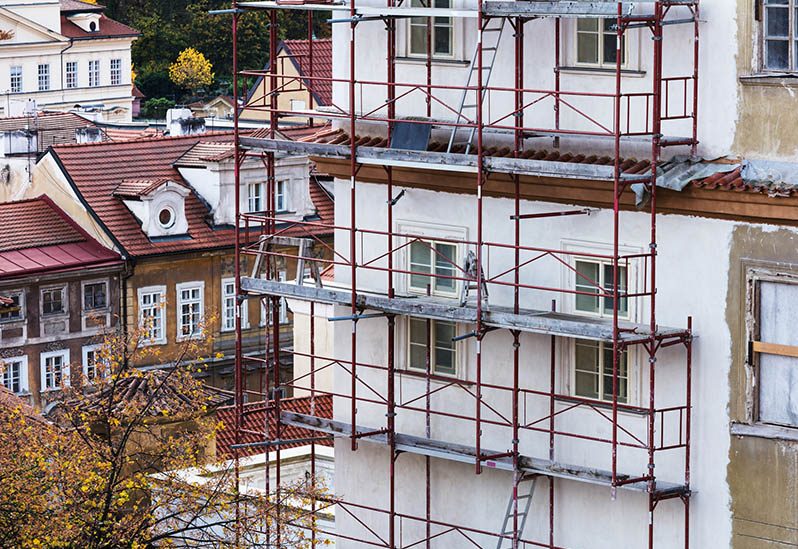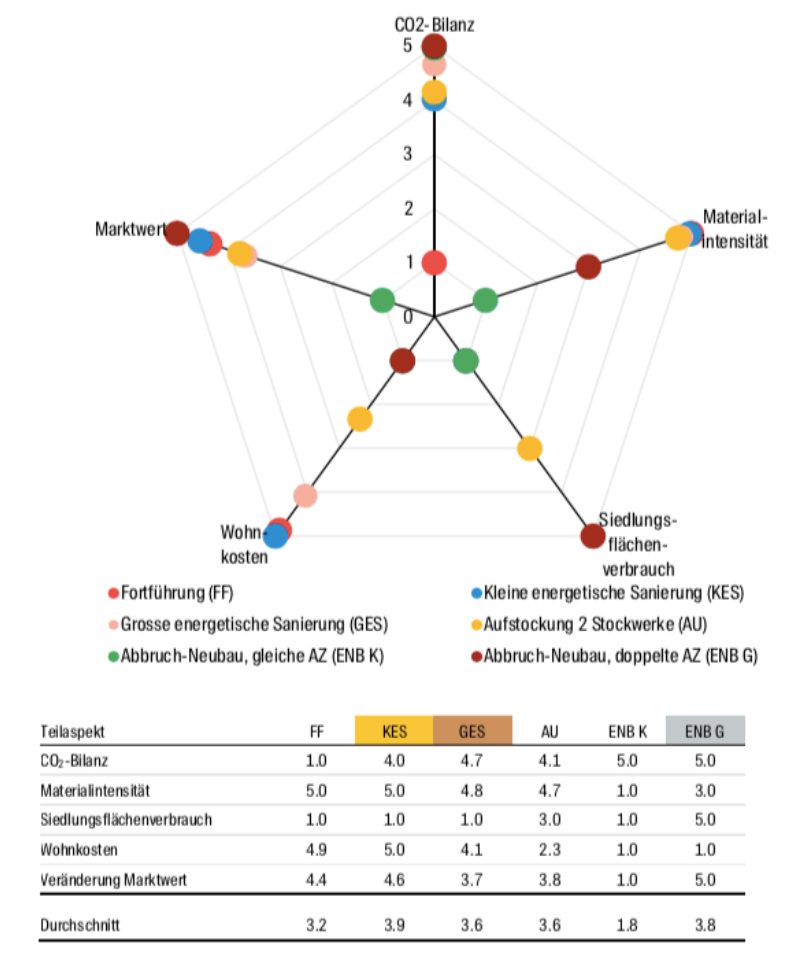Study on the circular economy: strategies for dealing with existing buildings
May 23, 2021

Commissioned by the Federal Office for the Environment (BAFU), this project addressed the conflicting goals that arise in questions of sustainability in connection with older buildings.
Especially with older properties, many questions arise regarding sustainability. Which measures are sustainable: do nothing, renovate for energy efficiency, add more floors or build new?
To answer this question, the following metrics were defined: Cost-effectiveness, housing costs, land use, carbon footprint and material intensity. One of the main findings of the project was that minimum renovation with heating replacement often represents the optimum with regard to the totality of the above five metrics. Replacement construction, i.e. demolition with subsequent new construction, is often only comprehensively sustainable, especially in the case of large utilization reserves of over 200%. Although the demolition of buildings destroys existing living space and consumes a lot of gray energy, the positive aspect of this approach is the economical use of settlement space, in addition to the fact that new buildings emit virtually no CO2.
